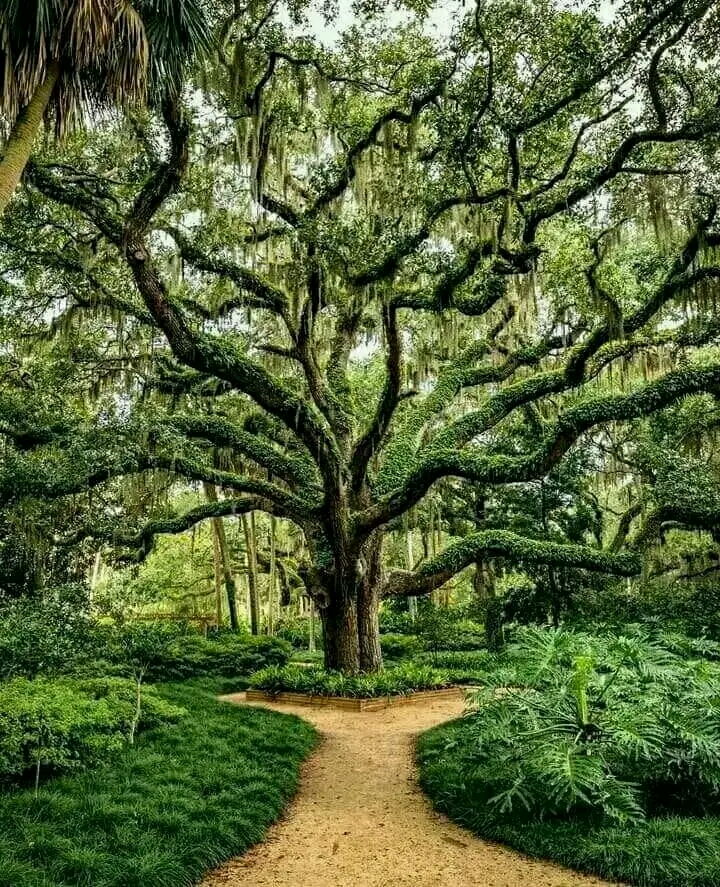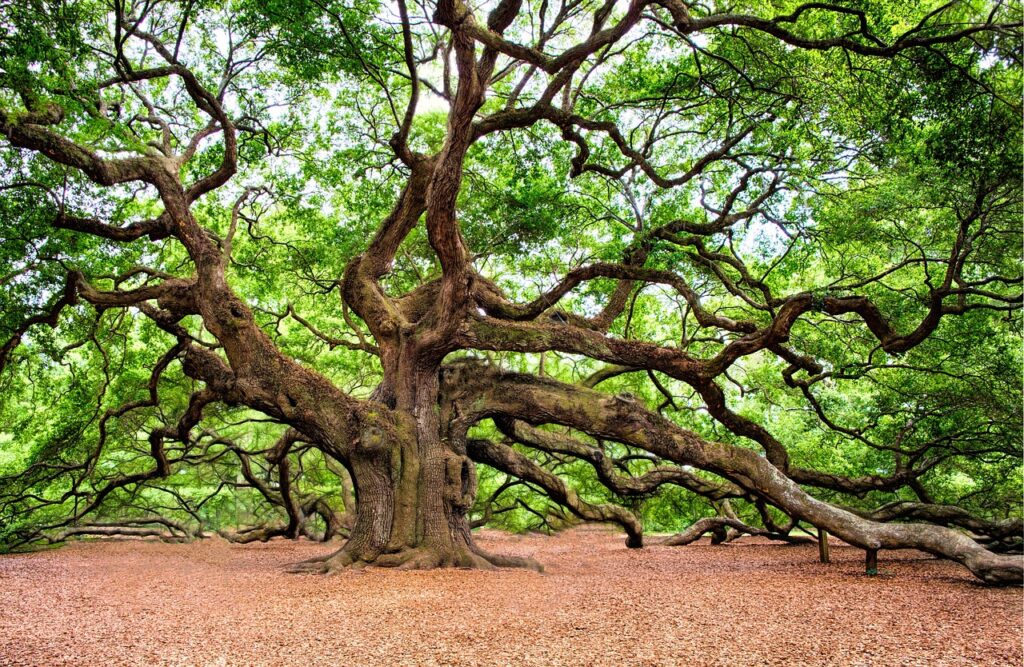Overview and significance of the Oka tree
The Oka tree is one of the most amazing natural features in Washington oaks gardens state park in palm coast, Florida. This historic park is well known for its beautiful gardens, coastal views, and ancient oak trees. Among them, the Oka tree stands as a symbol of strength, history, and beauty. The name ‘Oka’ comes from a native American word for ‘water,’ showing its deep connection to the nearby river and coast. This tree is a live oak (Quercus virginiana), a species famous for its strong branches, wide canopy, and deep roots. Live oaks can survive for hundreds of years, standing firm against hurricanes, storms, and human activity. The Oka tree is estimated to be over years old, making it one of the oldest and most respected trees in the park.
Many visitors admire the Oka tree’s massive trunk and spreading branches. It provides a home for squirrels, birds, and insects, creating a lively ecosystem. Its thick limbs offer shade and shelter, making it a perfect spot to relax on warm Florida days. The tree also helps protect the land from erosion. Its large root system keeps the soil in place near the park’s gardens and waterways. This makes it not only a beautiful landmark but also an important part of the park’s natural balance.

The Oka tree’s role in the ecosystem
The Oka tree is more than a beautiful landmark. It is essential to the ecosystem of Washington oaks gardens state park. Like other live oaks, it supports many plants and animals, helping maintain biodiversity. One major benefit of the Oka tree is that it provides food and shelter for wildlife. Its thick bark and strong branches make safe nesting spots for birds like woodpeckers, owls, and warblers. The tree also produces acorns, which are an important food source for squirrels, deer, and raccoons. These acorns help animals survive, especially in winter when food is scarce.
The Oka tree also helps improve air quality and regulate the climate. Its wide, green leaves absorb carbon dioxide and release oxygen. The tree’s shade cools the area, making it more comfortable for visitors and animals. Its roots play a key role in preventing soil erosion and storm damage. Since the park is close to the Matanzas river and the Atlantic Ocean, it faces strong winds, saltwater, and occasional flooding. The Oka tree’s deep roots help hold the soil n place, protecting the land from erosion and keeping nearby plants stable.

Cultural and historical importance
The Oka tree has a long history, making it an important part of Florida’s cultural heritage. Live oaks like the Oka tree are symbols of strength, endurance, and wisdom. They have been connected to native American tribes, European settlers, and modern conservation efforts. Native American tribes, including the Timucua people, once lived near Washington oaks gardens. They likely used live oaks for shelter, tools, and even spiritual ceremonies. Many indigenous considered these trees sacred, representing a deep connection to nature. During the Spanish colonial period, live oak wood was highly valued for its strength. Its dense, sturdy wood was used to build ships, homes, and furniture. Some of America’s most famous ships, like the USS constitution, were made from live oak timber. While there is no proof that the Oka tree was used for shipbuilding, its species played an important role in history.
In the 20th century, Louise and Owen young, former owners of Washington oaks gardens, helped protect the park’s natural beauty. They preserved its ancient oak trees, including the Oka tree. In 1964, they donated the land to the state, ensuring future generations could enjoy its wonders. Today, the Oka tree stands as a reminder of Florida’s rich past. It teaches visitors the importance of nature, history, and conservation. This majestic tree continues to be a symbol of strength and heritage, connecting the past to the present.
Visiting the Oka tree and conservation efforts
Visiting the Oka tree is a special experience for many guests at Washington oaks gardens state park. The tree is easy to find, located along the garden and nature trails. As visitors walk through the shaded pathways, they can admire its strong branches, rough bark, and wide canopy. The tree’s presence creates a peaceful and almost magical atmosphere. The park provides signs and guided tours to help visitors learn about the Oka tree. This share information about its history, ecological role, and conservation efforts. Many people enjoy taking photos under its massive limbs or relaxing in its shade. The tree’s beauty and size make it a favorite spot for nature lovers.
To protect the Oka tree, the park has strong conservation efforts in place. Officials work to keep it safe from pests, disease, and human impact. They regularly check its health, trim dead branches, and care for the soil around its roots. These efforts help the tree stay strong and continue to thrive. Old oak trees in Florida face many challenges, including climate change and extreme weather. Hurricanes, strong winds, and saltwater exposure can weaken them over time. To fight these threats, the park’s conservation team works to protect the surrounding frost. Keeping the area healthy helps ensure the Oka tree and other historic trees can survive for future generations. Visitors play an important role in protecting the Oka tree. To keep it safe, guests should avoid climbing its branches, littering, or disturbing wildlife. Following park rules helps preserve this historic tree so that others can enjoy it for years to come.The Oka tree is more than just a tree it is a symbol of Florida’s natural and cultural heritage. As a centuries old live oak, it provides a home for wildlife and strengthens the ecosystem. It also serves as a reminder of the region’s rich history. With conservation efforts and responsible tourism, this incredible tree will continue to inspire visitors for generations. Whether taking in its towering branches, learning its story, or simply resting in its shade, the Oka tree remains one of the park’s most cherished landmarks.
